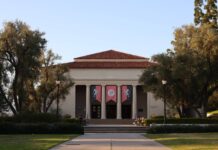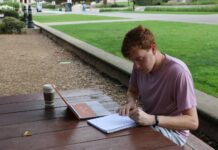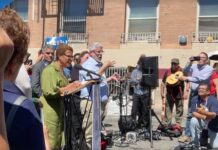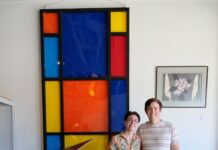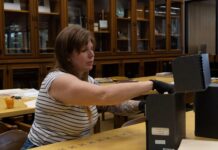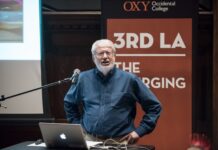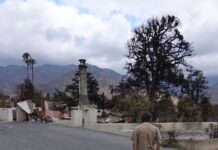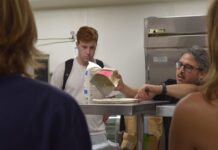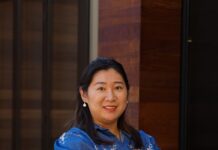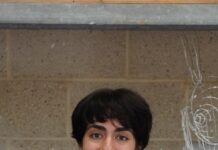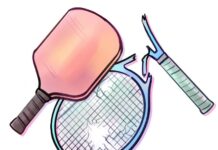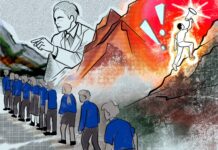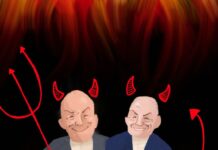Author: Lauren Rewers
On the bottom floor of Weingart Center for the Liberal Arts, the printmaking studio is humming with activity. Colorful samples of art projects line the walls and indie music blares. The students themselves are equally as lively; chatting but focused on their work.
Abbey Williams (senior) is one of the 10 studio art majors in her graduating class. Williams has been working on her senior comprehensive project since the beginning of the semester, perfecting her full body of work that will be presented in a gallery and reception put on by the students starting Dec. 5.
At the moment, she is painting on a sheet of acetate over a digital black-and-white photo of an abandoned house. When she is finished with the painting, using the photo as a guide, she will send it through the printing press, which will make one unique print in a process known as monotype.
Williams’ work is centered on the ghost towns that she observed while driving on several cross-country road trips from her hometown of Boston to Occidental. The dilapidated buildings that are the subjects of her prints stand in contrast to the wilderness of the Mojave Desert where they are located.
“I’m sort of playing with ideas of abandonment and abstraction in these structural forms,” she said. “The juxtaposition creates a tension, and so these locations that are kind of deteriorating are supposed to be reflected in the piece.”
The senior studio art majors meet once a week for four hours in order to discuss and critique their work, and talk about their inspirations.
“It’s been cool to see everyone’s evolution because we’ve always had classes together,” Williams said.
The class is run by Professor Linda Lyke, who also teaches the printmaking classes at Occidental. Lyke, Williams’ adviser, has known her for all four years of her collegiate career. Williams describes her and the other professors in the department as being close with their students.
“They’re all very encouraging,” she said. “They really are great at what they do. They give great advice.”
Lyke has equally strong words for her mentee.
“She does exquisite works, in terms of the different ghost towns that she’s photographed,” Lyke said. “I think she always had art ability … she is a really intelligent person who could complete her assignments with gusto and verve.”
According to Lyke, Occidental’s emphasis on social justice and inequality often shows in the messages of the art of students, including Williams’.
“She’s interested in the landscape of the country in a broad sense, and … the way we consume as people the cultural and physical resources is part of the message that she’s trying to convey in these,” Lyke said.
Williams, who used to focus on watercolor portraits, is trying to move toward a more abstract style in this project.
“I used to only focus on mimetic representation and I tried to make everything perfect and almost photographic, but I’m trying to let go of that and let my own hand as artist come through a little more,” she said.
After her experience at Occidental, Williams has advice for aspiring artists.
“Just do it,” she said. “If they have something to say and something they want to make, then they should just go for it.”
This article has been archived, for more requests please contact us via the support system.
![]()




